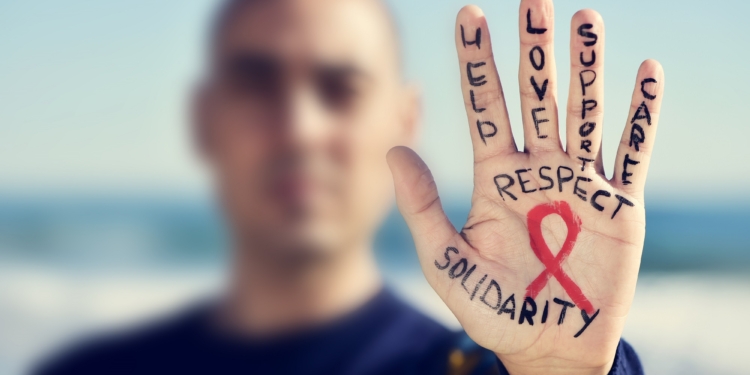As the world marks World AIDS Day 2021 with the theme: “End inequalities. End AIDS”, stakeholders working on HIV/AIDS in Nigeria have acknowledged the successes that have been recorded over the years, but are concerned about Nigeria meeting the global targets of 95-95-95 by 2030.
World AIDS day is a day set aside for people across the world to unite in the fight against HIV, to show support for people living with HIV, to commemorate those who have died from an AIDS-related illness, and to re-strategize towards achieving the global goal of ending the AIDS epidemic by 2030.
According to the UNAIDS, the global target that has been set for 2030 is ‘95-95-95’ for treatment: 95% of people living with HIV know their HIV status; 95% of people who know their status on treatment; and 95% of people on treatment with suppressed viral loads.
Also expected to be achieved by 2030 is the reduction in the annual number of new HIV infections among adults to 200,000 (globally) and achieving zero discrimination.
Ending AIDS: Milestones Achieved in Nigeria
While acknowledging the positive responses of the Nigerian government to HIV prevention, Mr. Obatunde Oladapo, the Executive Director, PLAN Health Advocacy and Development Foundation, a PLHIV led organization, admitted that so much progress has been made regarding the fight against HIV/AIDS in the last 20 years.
He explained that there is increased access to services for persons living with HIV (PLHIV), reduction in mother to child transmission and reduction in stigmatization.
Oladapo buttressed that, “initially, stigmatization of PLHIV was stifling and people were hiding their status, but now, the disclosure level has increased because PLHIV wants to be informed.
“We have a lot of people coming out for treatment, mothers accessing the prevention of mother to child transmission (PTMCT) which is reducing the number of babies getting infected by parents and more support groups for PLHIV.”
Oladapo also noted that, “ there are numerous treatment centres across the country and there is increased suppression of viral loads of PLHIV, leading to Undetectable equals Untransmittable ‘U=U’ which makes the end of AIDS more visible.”
Also, Olayide Akanni, Executive Director, Journalists Against AIDS (JAAIDS) acknowledged that the HIV response has improved tremendously and a lot of milestones have been achieved, from prevention to treatment.
She noted that, “in 2002, the aim was to put 10000 adults and 5000 children on treatment which looked like a huge task but in 2021 we are close to 1 million people having access to HIV treatment in Nigeria.”
Existing Challenges Despite Successes
Speaking with BONews Service, Obatunde Oladapo explained that testing has not reached so many people thereby making it difficult for them to access treatment services.
Oladapo noted that the structure for funding HIV prevention in Nigeria is a pyramid which has led to low community engagement and responses adding that state governments are not contributing substantial resources to HIV prevention.
Olayide Aknni believes that Nigeria has made terrific impacts in the fight against HIV but efforts have reduced towards preventing new cases.
She said, “regarding prevention, we have dropped the ball and I believe we’re moving slowly regarding the taegts U=U”
Akanni stressed that there is need to invest more resources in scaling up prevention intervention in Nigeria and to address the inequalities in accessing treatment services by the marginalized groups.
Capturing Marginalized Groups
Speaking further on capturing marginalized groups in the HIV prevention and treatment scheme, Olayide Akanni explained that so many people have been exempted and excluded in accessing HIV services either because of their behavioural patterns or locations.
She noted that there is room for improvement to address the inequalities in access to treatment for marginalized groups, adding that “we need to be more deliberate in meeting the needs of young people, adolescent women and the key population.”
Identifying Persons with Disabilities (PWDs) as a marginalized group, Obatunde Oladapo opines that there is need to ensure accessibility to services for PWDs who are HIV positive; provide HIV materials in accessible formats for all groups, regardless of their type of disability.
He also added that there is need to “engage PWDs to be in the forefront of providing services, put in place mechanisms to end discrimination against PWDs living with HIV and integrate Sexual and Reproductive Health (SRH) services into HIV services.”
Achieving 95-95-95 Targets by 2030
To achieve the 95-95-95 global targets of eradicating HIV by 2030, it is believed that the theme of this year’s World AIDS day ‘End inequalities. End AIDS’ is apt, as it would help leaders and stakeholders to achieve the set goals.
Olayide Akanni who said 2030 is just 9 years away, believes that Nigeria’s chances of meeting the target is bleak. She also encouraged that if necessary steps are taken to address the needs of key populations and young people.
She also noted that the HIV response in Nigeria is heavily dependent on donor funding and there is a need to mobilize increased domestic resources to tackle this challenge.
Corroborating Akanni, Mr. Oladapo also said that there is a need to expand resource mobilization across boards as a way of tackling limited resources allocated to HIV/AIDS.
He also added that, “we need to increase the quality of leadership among networks and organizations of PLHIV so that leaders are able to ensure that their members have unfettered access to HIV treatment.”

